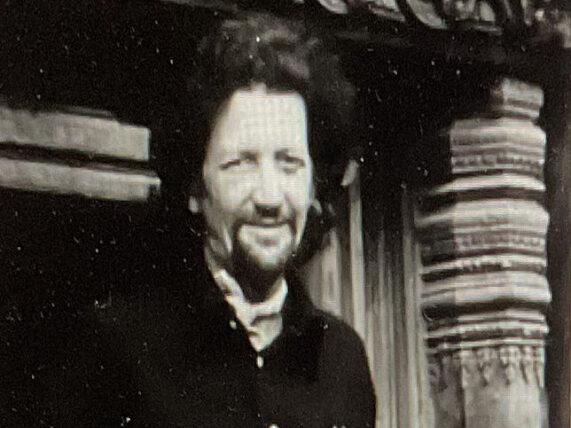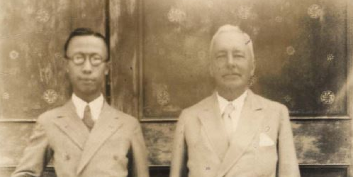SOAS Student Union Refurbishments Causes Shock, Disappointment, and Anger Amongst Student Body

By Sam Landis, BA Social Anthropology and International Relations
“As SOAS continues to market its curriculum as decolonized and social-justice oriented to attract ‘leftist’ students while simultaneously destroying campus spaces embedded in alternative, revolutionary and anti-capitalist ideologies, the rampant contradictions of the university remain on full display.”
As students returned to the SOAS campus for the onset of the 2023/24 academic year in late September, an air of grief and grievance overtook many as they discovered their freshly ransacked Student Union (SU). Long considered a safe space home to vibrant political expression, community events, fruitful conversation, budding friendships, and frequent late-night dance sessions, the walls once covered head-to-toe with writing and artwork currently lay bare, and the rooms formerly filled with immense feelings of possibility and potential largely remain empty, the hollow smell of fresh white paint now the most presiding characteristic of the once vibrant refuge.
The SOAS SU, consisting of the (formerly conjoined, now separated) Junior Common Room (JCR) and SU Bar, has been gutted and refigured into an unrecognisable space under the direction of SOAS and SOAS SU management. Flashy renovations, not just limited to SU spaces but widespread across the entire campus, include a completely remodelled bar equipped with brand new furniture and lighting fixtures, a stage and upgraded sound system, and a refurbished smoking area with tiled walls, potted plants, fairy lights, and new cement floors; the transformation of the former ‘Russel Room’ into a new SU office, also equipped with new furniture and fancy lighting fixtures, bathroom additions, and room dividers; fully refurbished bathrooms across all levels of the Main Building; and many smaller projects. In the process of re-fitting our SU, the sea of posters, flags, drawings, quotes, stickers, and writings which gave the SOAS Student Union its feelings of warmth, comfort and contrast compared to other UK student unions were removed, and any attempt to replace them has been met with hostile reactions from security, including an instance on 10 October which saw a SOAS student harassed and threatened with removal for putting up posters critical of SOAS director, Adam Habib.
While the exact amount spent on these refurbishments is presently unclear, they surely cost the University a hefty amount of money, and come at a time not only when SOAS’s last recorded financial statement in 2022 displayed a deficit of over £20 million (Source: SOAS Financial Statement, 2021-22), but also as SOAS has consistently refused to offer adequate concessions to workers throughout decades of wage disputes and strike actions. Last year, SOAS withheld 100% of wages from staff members partaking in the University and College Union (UCU) marking and assessment boycott, and dismissed SOAS UCU branch secretary, David Lunn, from his job. Furthermore, they refused to negotiate with UNISON staffers (as they have done for years) striking to secure higher wages, English-as-a-second-language classes, and an end to workforce casualization — all pressing financial situations intimately bound to the survival and well-being of staff members which SOAS chose to withhold monetary resources from. Malena, a former SOAS student and long-term member of the Justice for Workers Campaign – a group which organizes around staff working concerns, particularly those of the SOAS cleaning team – said: ‘Coming back as a former student, it feels very disorienting and confusing. I don’t really understand how an institution that has, on a yearly basis, stated cases of bankruptcy and lack of funds in order to justify not bringing workers in-house, not raising their salaries…can invest in these nonsensical reforms of the Student Union.’ A large Justice for Workers mural was one of many painted over during the refurbishments. ‘The place looks like a dungeon,’ she said.
The attempts to suppress and (literally) white-wash forms of political expression within the SOAS Student Union, in addition to new bureaucratic ticketing systems which limit access to the SU bar due to capacity restrictions following the removal of the staircase which formerly conjoined the JCR with the bar, have transformed feelings of community and cohesion into exclusion and fear. ‘It seems so scary to go in there…I felt like, am I even allowed to go in?’ asked an MA Post-Colonial Studies student who wished to remain anonymous. ‘It was a communal hub, it created the heart of SOAS…Today, it seems like such a sterile space.’ The financial implications these new capacity restrictions will have on the SOAS Bar remain unclear but appear unfavourable — especially given that the bar was still under construction until the very end of welcome week, one of the most profitable times for campus businesses.
While the physical division of the JCR and SU Bar was a change requested by those hoping to access a communal and social space without the presence of alcohol, a useful and positive adjustment, the lack of consideration given to students’ opinions regarding the rest of the refurbishments is evident. Despite SOAS’s increased aims to inundate students with channels through which to provide feedback and obtain official student representation positions, the once completely democratically elected, student-led and operated SU — composed of four full-time sabbatical officers and various part-time volunteer officers — has undergone drastic structural changes in recent years which have significantly lessened the ability of students to make independent decisions regarding the functioning of SU spaces. In addition to the four sabbatical officers, the SOAS SU now employs eight full- and part-time non-student, non-elected staff members including a CEO, Student Engagement manager, and Finance and Office manager. These figures have amassed significant levels of responsibility and power, and frequently make decisions without assessing the concerns of students.
Gioia Scazza, a third-year undergraduate student and last year’s Co-President of Democracy and Education for the Students’ Union, expressed that although they and other sabbatical officers made their opposition regarding the refurbishments clear to the SU’s CEO during a consultation, the changes still went ahead. ‘They told us that because we were only there for one year, our opinion was not as relevant…They knew that the [sabbatical] team was opposed to covering up the graffiti, and they did it anyway. They waited until the end of our mandate to do so, and they waited to do it until no students were on campus.’ Citing the impact of neoliberal educational reforms on the rising suppression of radical political thought on university campuses across the UK, Gioia noted that the eradication of student artwork and writing across SU spaces is ‘an attempt to erase our thoughts and our opinions on SOAS, on global politics…which is exactly what we thought this school was for.’ As SOAS continues to market its curriculum as decolonized and social-justice-oriented to attract ‘leftist’ students while simultaneously destroying campus spaces embedded in alternative, revolutionary and anti-capitalist ideologies, the rampant contradictions of the university remain on full display.
‘How is it possible for us to express ourselves when they are creating such a neutral space?’ asked Gioia. ‘As if the ‘School of Oriental and African Studies’ could ever be a neutral space, if you know what I mean.’
Photo Credit: (1) Jasper Newport, The UCL Tab; (2) Sam Landis, SOAS Spirit




